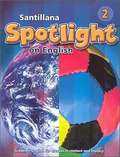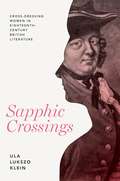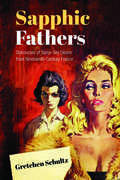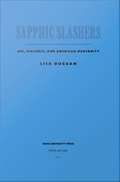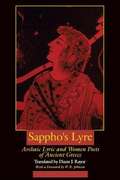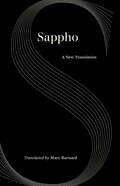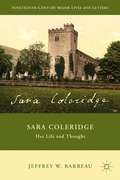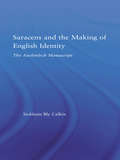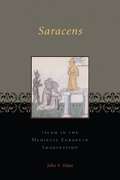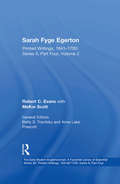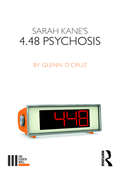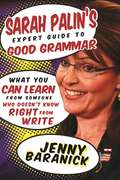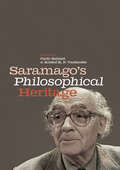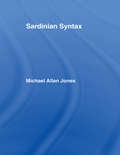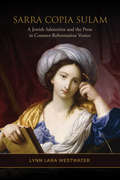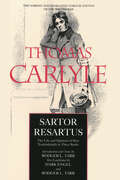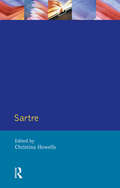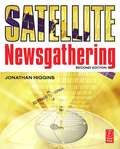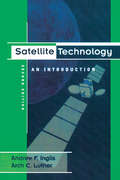- Table View
- List View
Santillana Spotlight on English, [Level] 2, Student Book (Spotlight On English Ser.)
by Vista Higher LearningNIMAC-sourced textbook
Santoor (English Textbook) class 4 - NCERT-25
by National Council of Educational Research and TrainingSantoor – Textbook of English for Grade 4 is a comprehensive English textbook aligned with the National Education Policy 2020 and the National Curriculum Framework 2023. Designed for the Preparatory Stage, it builds on foundational skills while fostering curiosity, creativity, and communication. The book blends stories, poems, activities, and real-life contexts to enhance reading, writing, listening, and speaking abilities. It promotes values such as honesty, teamwork, safety, and respect through engaging content like “Together We Can,” “The Tinkling Bells,” and “Braille.” Visuals, rhymes, role-play, and interactive exercises encourage independent learning, vocabulary building, and critical thinking. The chapters explore themes of nature, culture, health, and moral development while nurturing sensitivity, inclusiveness, and cultural rootedness. Carefully structured lessons, supported by colourful illustrations and activities, ensure a joyful learning experience that bridges language development with cognitive, emotional, and social growth for young learners.
Sapphic Crossings: Cross-Dressing Women in Eighteenth-Century British Literature (Peculiar Bodies)
by Ula Lukszo KleinAcross the eighteenth century in Britain, readers, writers, and theater-goers were fascinated by women who dressed in men’s clothing—from actresses on stage who showed their shapely legs to advantage in men’s breeches to stories of valiant female soldiers and ruthless female pirates. Spanning genres from plays, novels, and poetry to pamphlets and broadsides, the cross-dressing woman came to signal more than female independence or unconventional behaviors; she also came to signal an investment in female same-sex intimacies and sapphic desires. Sapphic Crossings reveals how various British texts from the period associate female cross-dressing with the exciting possibility of intimate, embodied same-sex relationships. Ula Lukszo Klein reconsiders the role of lesbian desires and their structuring through cross-gender embodiments as crucial not only to the history of sexuality but to the rise of modern concepts of gender, sexuality, and desire. She prompts readers to rethink the roots of lesbianism and transgender identities today and introduces new ways of thinking about embodied sexuality in the past.
Sapphic Fathers
by Gretchen SchultzLiterature that explored female homosexuality flourished in late nineteenth-century France. Poets, novelists, and pornographers, whether Symbolists, Realists, or Decadents, were all part of this literary moment. In Sapphic Fathers, Gretchen Schultz explores how these male writers and their readers took lesbianism as a cipher for apprehensions about sex and gender during a time of social and political upheaval.Tracing this phenomenon through poetry (Baudelaire, Verlaine), erotica and the popular novel (Belot), and literary fiction (Zola, Maupassant, Péladan, Mendès), and into scientific treatises, Schultz demonstrates that the literary discourse on lesbianism became the basis for the scientific and medical understanding of female same-sex desire in France. She also shows that the cumulative impact of this discourse left tangible traces that lasted well beyond nineteenth-century France, persisting into twentieth-century America to become the basis of lesbian pulp fiction after the Second World War.
Sapphic Slashers: Sex, Violence, and American Modernity
by Lisa DugganOn a winter day in 1892, in the broad daylight of downtown Memphis, Tennessee, a middle class woman named Alice Mitchell slashed the throat of her lover, Freda Ward, killing her instantly. Local, national, and international newspapers, medical and scientific publications, and popular fiction writers all clamored to cover the ensuing "girl lovers" murder trial. Lisa Duggan locates in this sensationalized event the emergence of the lesbian in U. S. mass culture and shows how newly "modern" notions of normality and morality that arose from such cases still haunt and distort lesbian and gay politics to the present day. Situating this story alongside simultaneously circulating lynching narratives (and its resistant versions, such as those of Memphis antilynching activist Ida B. Wells) Duggan reveals how stories of sex and violence were crucial to the development of American modernity. While careful to point out the differences between the public reigns of terror that led to many lynchings and the rarer instances of the murder of one woman by another privately motivated woman, Duggan asserts that dominant versions of both sets of stories contributed to the marginalization of African Americans and women while solidifying a distinctly white, male, heterosexual form of American citizenship. Having explored the role of turn-of-the-century print media--and in particular their tendency toward sensationalism--Duggan moves next to a review of sexology literature and to novels, most notably Radclyffe Hall's The Well of Loneliness. Sapphic Slashers concludes with two appendices, one of which presents a detailed summary of Ward's murder, the trial, and Mitchell's eventual institutionalization. The other presents transcriptions of letters exchanged between the two women prior to the crime. Combining cultural history, feminist and queer theory, narrative analysis, and compelling storytelling, Sapphic Slashers provides the first history of the emergence of the lesbian in twentieth-century mass culture.
Sapphire�s Literary Breakthrough
by Elizabeth Mcneil Neal A. Lester Doveanna S. Fulton Lynette D. MylesThe first collection focused on the writing of provocative author and performance artist Sapphire, including her groundbreaking novel PUSH that has since become the Academy-award-winning film Precious.
Sappho's Lyre: Archaic Lyric and Women Poets of Ancient Greece
by Diane RayorSappho sang her poetry to the accompaniment of the lyre on the Greek island of Lesbos over 2500 years ago. Throughout the Greek world, her contemporaries composed lyric poetry full of passion, and in the centuries that followed the golden age of archaic lyric, new forms of poetry emerged. In this unique anthology, today's reader can enjoy the works of seventeen poets, including a selection of archaic lyric and the complete surviving works of the ancient Greek women poets--the latter appearing together in one volume for the first time. Sappho's Lyre is a combination of diligent research and poetic artistry. The translations are based on the most recent discoveries of papyri (including "new" Archilochos and Stesichoros) and the latest editions and scholarship. The introduction and notes provide historical and literary contexts that make this ancient poetry more accessible to modern readers. Although this book is primarily aimed at the reader who does not know Greek, it would be a splendid supplement to a Greek language course. It will also have wide appeal for readers of' ancient literature, women's studies, mythology, and lovers of poetry.
Sappho: A New Translation
by SapphoThese hundred poems and fragments constitute virtually all of Sappho that survives and effectively bring to life the woman whom the Greeks consider to be their greatest lyric poet. Mary Barnard's translations are lean, incisive, direct—the best ever published. She has rendered the beloved poet's verses, long the bane of translators, more authentically than anyone else in English.
Sara Coleridge
by Jeffrey W. BarbeauKnown as the daughter of Samuel Taylor Coleridge, Sara Coleridge's manuscripts, letters, and other writings reveal an original thinker in dialogue with major literary and cultural figures of nineteenth-century England. Here, her writings on beauty, education, and faith uncover aspects of Romantic and Victorian literature, philosophy, and theology.
Saracens and Franks in 12th - 15th Century European and Near Eastern Literature: Perceptions of Self and the Other
by Aman Y. NadhiriSaracens and Franks in 12th - 15th Century European and Near Eastern Literature examines the tension between two competing discourses in the medieval Muslim Mediterranean and medieval Christian Europe: one rooted in the desire to understand the world and one's place in it, and another promoting an ethnocentric narrative. To this end, it examines the construction of an image of the Other for Muslims in the Eastern Mediterranean and for Christians in Western Europe in works of literature, particularly in the works produced in the centuries preceding the Crusades; and it explores the ways in which both Muslim and Christian writers depicted the Enemy in historical accounts of the Crusades. The author focuses on medieval works of ethnography and geography, travel literature, Muslim and Christian accounts of the Crusades, and the romances of Western Europe to trace the evolution of the image of the Eastern Mediterranean Muslim in medieval Western Europe and the Western European Christian in the medieval Muslim world, first to understand the construct in the respective scholarly communities, and then to analyze the ways in which this conception informs subsequent works of non-fiction and fiction (in the Western European context) in which this Muslim or Christian Other plays a prominent role. In its analysis of the medieval Mediterranean Muslim and European Christian approaches to difference, this book interrogates the premises underlying the concept of the Other, challenging formulations of binary opposition such as the West versus Islam/Muslims.
Saracens and the Making of English Identity: The Auchinleck Manuscript (Studies in Medieval History and Culture #31)
by Siobhain Bly CalkinThis book explores the ways in which discourses of religious, racial, and national identity blur and engage each other in the medieval West. Specifically, the book studies depictions of Muslims in England during the 1330s and argues that these depictions, although historically inaccurate, served to enhance and advance assertions of English national identity at this time. The book examines Saracen characters in a manuscript renowned for the variety of its texts, and discusses hagiographic legends, elaborations of chronicle entries, and popular romances about Charlemagne, Arthur, and various English knights. In these texts, Saracens engage issues such as the demarcation of communal borders, the place of gender norms and religion in communities' self-definitions, and the roles of violence and history in assertions of group identity. Texts involving Saracens thus serve both to assert an English identity, and to explore the challenges involved in making such an assertion in the early fourteenth century when the English language was regaining its cultural prestige, when the English people were increasingly at odds with their French cousins, and when English, Welsh, and Scottish sovereignty were pressing matters.
Saracens: Islam in the Medieval European Imagination
by John TolanIn the first century of Islam, most of the former Christian Roman Empire, from Syria to Spain, was brought under Muslim control in a conquest of unprecedented proportions. Confronted by the world of Islam, countless medieval Christians experienced a profound ambivalence, awed by its opulence, they were also troubled by its rival claims to the spiritual inheritance of Abraham and Jesus and humiliated by its social subjugation of non-Muslim minorities. Some converted. Others took up arms. Still others, the subjects of John Tolan's study of anti-Muslim polemics in medieval Europe, undertook to attack Islam and its most vivid avatar, the saracen, with words.In an effort to make sense of God's apparent abandonment of Christendom in favor of a dynamic and expanding Muslim civilization, European writers distorted the teachings of Islam and caricatured its believers in a variety of ways. What ideological purposes did these portrayals serve? And how, in turn, did Muslims view Christianity? Feelings of rivalry, contempt, and superiority existed on both sides, tinged or tempered at times with feelings of doubt, inferiority, curiosity, or admiration. Tolan shows how Christian responses to Islam changed from the seventh to thirteenth centuries, through fast-charging crusades and spirit-crushing defeats, crystallizing into polemical images later drawn upon by Western authors in the fourteenth to twentieth centuries. Saracens explores the social and ideological uses of contempt, explaining how the denigration of the other can be used to defend one's own intellectual construction of the world.
Sarah Fyge Egerton: Printed Writings, 1641–1700: Series II, Part Four, Volume 2 (The Early Modern Englishwoman: A Facsimile Library of Essential Works & Printed Writings, 1641-1700: Series II, Part Four)
by Robert C. EvansSarah Fyge Egerton (1668-1723) is an intriguing poet who wrote a great deal of poetry during a period when women poets were relatively rare. Her career also began at an astonishingly early age: she was barely fourteen years old when one of her poems was first printed in London. Throughout much of her life Egerton used poetry to share her thoughts, vent her feelings, and participate, to a highly unusual degree, in the public discourse of her times. The Female Advocate is perhaps her most famous single work. It was her very first publication and was printed three times in her own lifetime”in 1686, in a revised edition in 1687 and once more in 1707. The original 1686 edition is included in this volume along with the third edition of 1707, which is very rare. Alongside The Female Advocate in this volume is Egerton's Poems on Several Occasions, Together with a Pastoral. This is a diverse volume with no obvious pattern or design but which includes many poems which display real talent and can express surprisingly assertive or unexpected views, suggesting the volume deserves far more analytical attention than it has yet received.
Sarah Kane's 4.48 Psychosis (The Fourth Wall)
by Glenn D'Cruz"Everything passes/Everything perishes/Everything palls" – 4.48 Psychosis <P><P> How on earth do you award aesthetic points to a 75-minute suicide note? The question comes from a review of 4.48 Psychosis’ inaugural production, the year after Sarah Kane took her own life, but this book explores the ways in which it misses the point. Kane’s final play is much more than a bizarre farewell to mortality. It’s a work best understood by approaching it first and foremost as theatre – as a singular component in a theatrical assemblage of bodies, voices, light and energy. The play finds an unexpectedly close fit in the established traditions of modern drama and the practices of postdramatic theatre. <P><P> Glenn D’Cruz explores this theatrical angle through a number of exemplary professional and student productions with a focus on the staging of the play by the Belarus Free Theatre (2005) and Melbourne’s Red Stitch Theatre (2007).
Sarah Palin's Expert Guide to Good Grammar: What You Can Learn from Someone Who Doesn't Know Right from Write
by Jenny BaranickA hilarious, informative guide to language and grammar inspired by America’s favorite maverick.It would seem to go without saying that a strong understanding of how to use language properly and effectively is a requisite for success in the 21st century. And yet, increasingly even some of America’s most prominent public figures and leaders seem to have only the most tenuous grasp of how to put together a coherent sentence or paragraph. No individual could be more representative of this unfortunate national tendency than Sarah Palin-the former Governor of Alaska, Fox News pundit, and now campaign surrogate for Donald Trump (another public figure with only a passing familiarity with how to use the English language).Time and again, Ms. Palin finds ways to bungle basic tenets of vocabulary, syntax, and grammar, often giving speeches or interviews that upon reexamination read more like the drunken ravings of someone unhinged. But it is for this very reason that Ms. Palin can be a great example for all Americans. Often it is only possible to learn from making mistakes, and Ms. Palin has made plenty. This book will be a guide that uses the colorful and chaotic language of Ms. Palin to illustrate key lessons of how (not) to write and speak well.
Saramago’s Philosophical Heritage
by Carlo Salzani Kristof K. VanhoutteThe past decades have seen a growing “philosophical” interest in a number of authors, but strangely enough Saramago’s oeuvre has been left somewhat aside. This volume aims at filling this gap by providing a diverse range of philosophical perspectives and expositions on Saramago’s work. The chapters explore some possible issues arising from his works: from his use of Plato’s allegory of the cave to his re-readings of Biblical stories; from his critique and “reinvention” of philosophy of history to his allegorical exploration of alternative histories; from his humorous approach to our being-towards-death to the revolutionary political charge of his fiction. The essays here confront Saramago’s fiction with concepts, theories, and suggestions belonging to various philosophical traditions and philosophers including Plato, Pascal, Kierkegaard, Freud, Benjamin, Heidegger, Lacan, Foucault, Patočka, Derrida, Agamben, and Žižek.
Sarangi class 1 - NCERT - 23: सारंगी १ली कक्षा - एनसीईआरटी - २३
by Rashtriy Shaikshik Anusandhan Aur Prashikshan Parishadसारंगी भाग 1 किताब का निर्माण करते हुए मुख्य रूप से राष्ट्रीय शिक्षा नीति 2020 के अनुसार भाषा राष्ट्रीय विकास को बढ़ावा देने और न्यायप्रिय समाज को विकसित करने में महत्वपूर्ण भूमिका निभाती है। इस नीति में बच्चों की शिक्षा में भाषा और साक्षरता के विकास को बहुत महत्व दिया गया है। यह माना जाता है कि भाषा और साक्षरता की ठोस नींव बच्चों के लिए अन्य विषयों को सीखने में बहुत सहायक होती है। राष्ट्रीय शिक्षा नीति 2020 में बुनियादी स्तर (फाउंडेशनल स्टेज) पर बच्चों में भाषा के विकास के साथ-साथ सतत सीखने की कला, समस्या-समाधान, तार्किक और रचनात्मक सोच के विकास पर भी बहुत बल दिया गया है। इस स्तर पर भाषा के साथ-साथ अन्य विषयों और गतिविधियों में भारतीय परंपरा, सांस्कृतिक मूल्य, चरित्र निर्माण, नैतिकता, करुणा और पर्यावरण के प्रति संवेदनशीलता को समेकित रूप में सम्मिलित करने की भी अनुशंसा की गई है।
Sarangi class 2 - NCERT - 23: सारंगी २री कक्षा - एनसीईआरटी - २३
by Rashtriy Shaikshik Anusandhan Aur Prashikshan Parishadसारंगी भाग 2 किताब का निर्माण करते हुए मुख्य रूप से राष्ट्रीय शिक्षा नीति 2020 के दिशा-निर्देशों को ध्यान में रखा गया है। राष्ट्रीय शिक्षा नीति 2020 के आलोक में विकसित बुनियादी स्तर की पाठ्यचर्या की अनुशंसाओं को भी इस पाठ्यपुस्तक में समाहित किया गया है। राष्ट्रीय शिक्षा नीति 2020 की अनुशंसाओं के अनुसार यह पाठ्यपुस्तक राष्ट्रीय विकास को बढ़ावा देने तथा न्यायपूर्ण समाज को विकसित करने में महत्वपूर्ण भूमिका निभाएगी। इस नीति में बच्चों की शिक्षा में भाषा और साक्षरता विकास को बहुत महत्व दिया गया है। भाषा और साक्षरता की ठोस नींव अन्य विषयों को भी दक्षतापूर्वक सीखने में सहायक होती है। राष्ट्रीय शिक्षा नीति 2020 बुनियादी स्तर (फाउंडेशनल स्टेज) पर बच्चों में भाषा के विकास के साथ-साथ सतत सीखने की कला, समस्या समाधान, तार्किक और रचनात्मक चिंतन के विकास पर भी बहुत बल देती है। इस स्तर पर भाषा के साथ-साथ अन्य विषयों और गतिविधियों में भारतीय परंपरा, सांस्कृतिक मूल्य, राष्ट्रप्रेम, चरित्र-निर्माण, नैतिकता, करुणा, जेंडर संवेदनशीलता और पर्यावरण के प्रति संवेदनशीलता को भी समेकित रूप में सम्मिलित करने की अनुशंसा करती है।
Sardinian Syntax (Romance Linguistics)
by Michael JonesSardinian Syntax presents the first comprehensive synchronic description of Sardinian syntax available in English. Michael Jones combines a detailed coverage of the language with a theoretical approach that draws on contemporary linguistic theory. The book provides an extensive reference grammar and an invaluable source of information for all linguists whose interests extend beyond the world's major languages.
Sarra Copia Sulam: A Jewish Salonnière and the Press in Counter-Reformation Venice (Toronto Italian Studies)
by Lynn Lara WestwaterFor nearly a decade at the height of the Counter-Reformation in Italy, the Jewish poet and polemicist Sarra Copia Sulam (ca. 1592–1641) hosted a literary salon at her house in the Venetian ghetto, providing one of the most public and enduring forums for Jewish-Christian interaction in early modern Venice. Though Copia Sulam built a powerful intellectual network, published a popular work on the immortality of the soul, and gained fame for her erudition, her literary career foundered under the weight of slanderous charges against her sexual, professional, and religious integrity. This first biography of Copia Sulam examines the explosive relationship between gender, religion, and the press in seventeenth-century Venice through a study of the salonnière’s literary career. The backdrop to this inquiry is Venice’s tumultuous religious, cultural, and political climate and the competitive world of its presses, where men and women, Christians and Jews, alternately collaborated and clashed as they sought to gain a foothold in Europe’s most prestigious publishing capital.
Sartor Resartus: The Life and Opinions of Herr Teufelsdröckh in Three Books (The Norman and Charlotte Strouse Edition of the Writings of Thomas Carlyle #2)
by Thomas CarlyleSartor Resartus is Thomas Carlyle's most enduring and influential work. First published in serial form in Fraser's Magazine in 1833-1834, it was discovered by the American Transcendentalists. Sponsored by Ralph Waldo Emerson, it was first printed as a book in Boston in 1836 and immediately became the inspiration for the Transcendental movement. The first London trade edition was published in 1838. By the 1840s, largely on the strength of Sartor Resartus, Carlyle became one of the leading literary figures in Britain.Sartor Resartus became one of the important texts of nineteenth-century English literature, central to the Romantic movement and Victorian culture. At the time of Carlyle's death in 1881, more than 69,000 copies had been sold. The post-Victorian influence continued and extends to writers as diverse as Virginia Woolf and James Joyce, Willa Cather and Ernest Hemingway.This edition of Sartor Resartus is the first publication of the work that uses all extant versions to create an accurate authorial text. This volume, the second in an eight-volume series, includes a complete textual apparatus as well as a historical introduction and full critical and explanatory annotation.
Sartre (Modern Literatures In Perspective)
by Christina HowellsFirst published in 1996. Routledge is an imprint of Taylor & Francis, an informa company.
Satellite Newsgathering
by Jonathan HigginsPraise for the first edition:"It is a wonderful source of information and has the merit of going straight to the subject, being technically precise although very easy to understand. There are numerous pictures, photographs, diagrams, which make the reading a real pleasure." --European Broadcasting Union Technical Review "The complexity of a satellite newsgathering system could be a four-month long college course with a high tuition rate and an enrolment number so large you have to watch your professor on a TV screen. Jonathan Higgins might have saved the independent learner a few attendance point deductions by fitting it into one book." --Satellite Broadband magazineAn ideal introduction for anyone working, or interested, in satellite newsgathering (SNG). The new edition of this popular book builds upon the success of the first--an important and valuable work that is extermely easy to read, comprehensive in its treatment, and detailed where necessary. SNG used to be an immensely complex and expensive affair where broadcasting organizations were at the mercy of an expert who sat in a lonely corner, until needed. Things have changed--everyone in a global news organization needs to know about it now. This is not only because of the high costs of mistakes, but because now even non-technical journalists on the ground have to operate their own equipment. Learn the skills, basics of equipment, cutting edge technology and critical safety issues of satellite newsgathering.
Satellite Technology: An Introduction
by Andrew F Inglis Arch LutherSatellite Technology, Second Edition is a complete update of this popular handbook exploring the world of communication satellites. It will help broadcast professionals and students fully understand these indispensable telecommunications tools. Written in easy-to-understand language, this book covers topics ranging from theories of satellite operation to practical instructions for the initial set-up of mobile earth stations. The second edition has been thoroughly updated to include: · the impact of rapid advances in digital technology,· the mass deployment of digital DBS systems,· new initiatives in satellite design, and· changes in regulations.
Sathottari Marathi Katha FYBA New NEP Syllabus - RTMNU: साठोत्तरी मराठी कथा एफ.वाय.बी.ए. नवीन एन.इ.पी. अभ्यासक्रम - राष्ट्रसंत तुकडोजी महाराज नागपूर विद्यापीठ
by Dr Dattatraya Watmode Dr Venkatesh Potphode Dr Sopandev Piseसाठोत्तरी मराठी कथा हा संग्रह १९६० ते २००० या कालखंडातील मराठी कथांचा प्रतिनिधिक दस्तऐवज आहे. या काळातील कथा सामाजिक, सांस्कृतिक, प्रादेशिक आणि भाषिक विविधतेचे सशक्त दर्शन घडवतात. पारंपरिक चौकटी मोडून नव्या जीवनमूल्यांची मांडणी करणाऱ्या या कथांमध्ये ग्रामीण, नागर, श्रमिक, दलित, आणि स्त्रियांचे वास्तव चित्रित होते. ह्या कथांतून माणसाच्या दु:खद संघर्षांतून उगम पावलेली करुणा, तिरस्कार, विषमता, आणि विद्रोहाचे स्वर सामोरे येतात. हरिभाऊंच्या स्फुट कथांपासून सुरू झालेली ही वाटचाल द. मा. मिरासदार, श्री. म. माटे, मधु मंगेश कर्णिक, आनंद यादव यांच्यासारख्या विविध शैलीतील कथाकारांनी पुढे नेली. कुणी विनोदी ढंगात तर कुणी वास्तववादी पद्धतीने जीवनाचे विवेचन केले. काही कथा ग्रामीण जीवनातील कष्ट, दारिद्र्य, मातृत्व व ममता यांची झलक दाखवतात, तर काहींमध्ये स्त्री-विषयक जाणीवा, सामाजिक विषमता व अंतर्मुखता प्रकर्षाने दिसते. आधुनिक मराठी कथेला नवा चेहरा देणारा हा संग्रह अभ्यासक, विद्यार्थी व रसिकांसाठी अमूल्य ठरतो. साठोत्तरी मराठी कथा म्हणजे काळाच्या प्रवाहातील मानवी संवेदना, मूल्यप्रत्यय व संघर्ष यांचे प्रतिबिंब होय.
